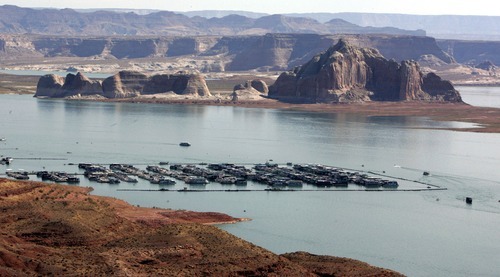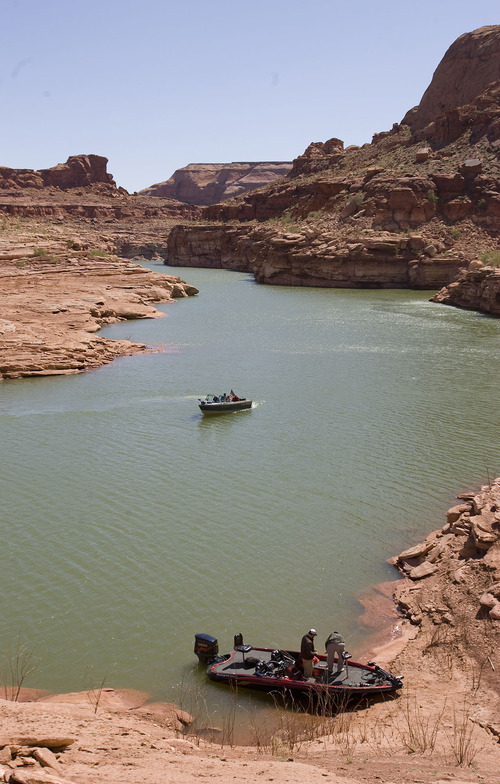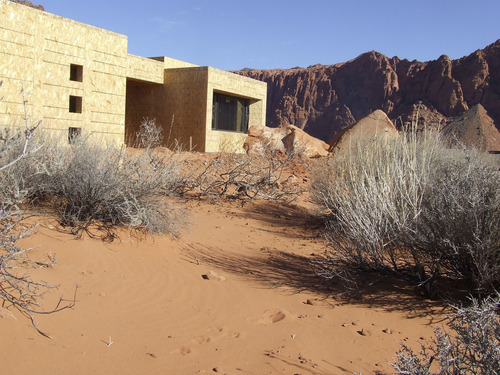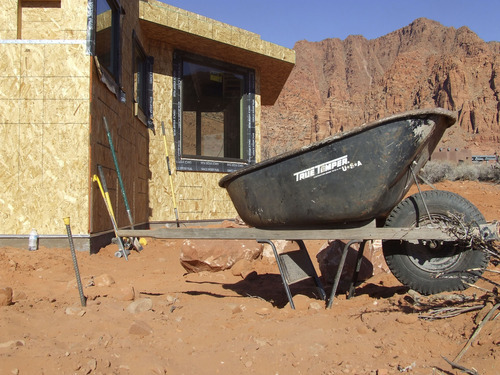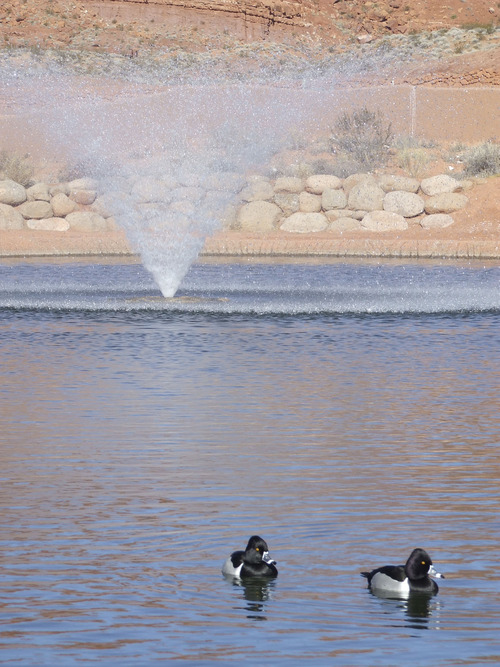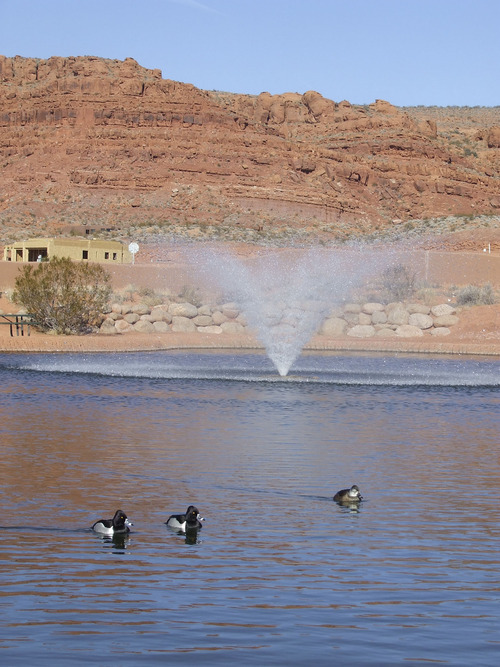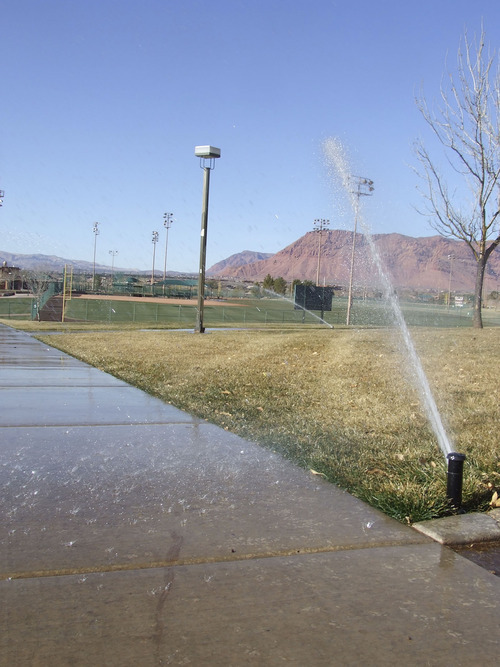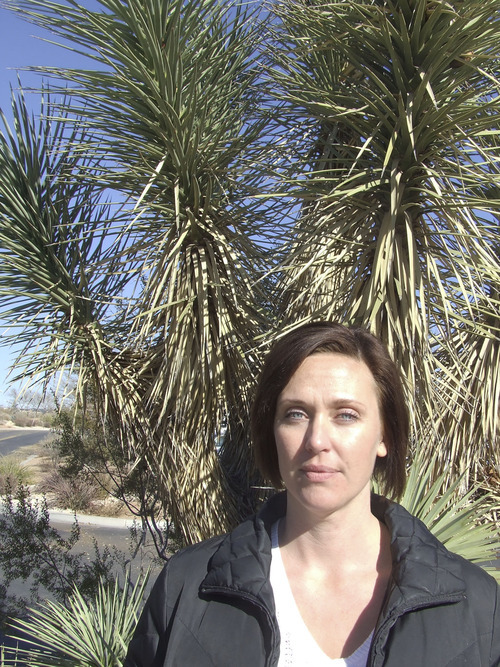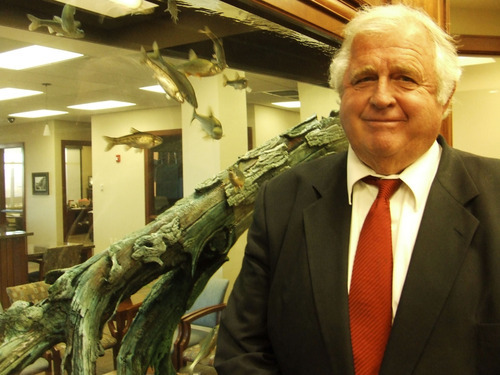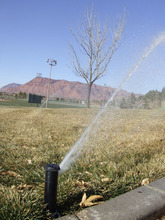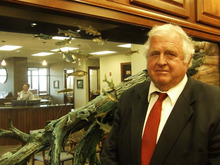This is an archived article that was published on sltrib.com in 2012, and information in the article may be outdated. It is provided only for personal research purposes and may not be reprinted.
St. George • Just turning on the faucet for the first time in a new home here in Utah's corner of the Mojave Desert could cost more than $20,000 a generation from now.
That's not a worst-case scenario. It's the plan.
Washington County charges about $5,800 in impact fees for each new residence to cover water development that quenches growing demand in this retirement haven. The fees rise about 5 percent a year in anticipation of a planned $1.2 billion Lake Powell pipeline that Utah lawmakers will be asked this session to finance with statewide sales taxes.
The impact fees are the primary device that the Washington County Water Conservancy District intends to use for repaying the proposed state loan, and the district expects them to exceed $20,000 by 2040 to cover the payments.
"New growth's going to pay for new growth," said water district General Manager Ron Thompson, and he doesn't see the gradual rise in tap fees as especially onerous, given a 50-year inflation average of 3.7 percent.
Washington County is the biggest, but not only, envisioned pipeline user, and Thompson figures its share of the project is $800 million in present dollars.
What if $20,000 doesn't do the trick? If the county doesn't resume and sustain its pre-recession growth trend, pipeline foes warn that home purchasers would be stuck with a much higher tab, and current residents would face steeper taxes and monthly water surcharges.
Although some lawmakers in recent task force hearings have dismissed the naysayers as anti-growth environmentalists, these anti-pipeline forces are not alone: Some Washington County real estate developers worry the costs would choke the quality of life.
Brooks Pace, a lifelong resident and developer, fears growing to a half-million people. That's another Utah Valley, with the air pollution to match.
"We're already big enough," he said. "Doubling it would really be big enough, and we have enough water to double it."
His friend Jim Dredge, a developer from Virgin, calls the pipeline a boondoggle.
"I always get in trouble with lots of people when I compare it to the pumps they put by the Great Salt Lake to use once," he said, referring to a 1980s flood-control project not needed in the low-water years since. "It's vastly unnecessary."
"It's not about growth," said Zach Frankel, executive director of the Utah Rivers Council. There's enough local supply and conservation potential to soak up the growth that the pipeline's 70,000 acre-foot payload would enable, he said. "It's a bad idea to build projects that aren't necessary."
Opponents argue better conservation in a place where most water is used outdoors would sustain growth for at least 50 years, and that no serious effort at conservation is possible until Washington County property taxes quit subsidizing low water rates. The Utah Taxpayers Association last month called for an end to such subsidies for water.
"It so flies in the face of the fiscal conservatism and the free-market advocacy that Utah espouses," said Christi Nuffer, director of the local smart-growth coalition Citizens for Dixie's Future. Property taxes make up more than half the water district's revenues — more than water bills — and that could drive away seniors. "They're looking to subsidize waste on fixed incomes."
Change that, and cut consumption in half, and what's to keep Washington County from doubling its population without a pipeline?
Thompson has heard it all before. For years he's sought water for growth, and he said the conservation/true cost model isn't real-world.
Asking today's residents to pay the whole cost of building a pipeline that has capacity well beyond their needs isn't fair, he says. That's why impact fees on new construction are crucial, he said, and it's why property taxes fill the gap for now. A vacant lot owner who doesn't use any water — but someday will — should pay taxes that help develop water.
With the pipeline, he said, Washington County can add 250,000 people in the next generation, more than doubling the population and the tax base. Per capita culinary-grade water use in the county has declined from 330 gallons a day to 240 (not counting 50 from lesser-grade secondary sources) in the past 15 years and will shrink more, he said, but "it can't get us there alone."
Pipeline critics insist it can.
Their logic lies partly in the death of desert farming here. Tens of thousands of acre-feet (each acre-foot is roughly enough for a household for a year) are at least on paper allocated to Washington County farms. Nuffer estimates that if a state-projected 5 percent growth rate happens, those new residents would occupy enough former farm fields by the time new water is needed in 2020 that they'll use former irrigation rights.
Thompson counters that most of the farm water is too salty for culinary use and would go to secondary outdoor needs.
The other philosophical divide is over St. George's thirst, compared with other Southwestern cities. Albuquerque, N.M., with similar rainfall, uses 140 gallons per person each day, about half St. George's total from all sources. Phoenix residents, paying water rates five times St. George's, use about 120.
Thompson points to subtle climate differences — Arizona monsoons slaking plants in the hottest months, for instance — to explain part of the difference. He also notes that institutions, hotels and second homes use a lot of Washington County's water, while full-time residents are far more water-frugal than the region's average. Tucson, Ariz., using 150 gallons per person per day, sends three-quarters of its water to residences, he said, while in St. George it's closer to a third.
In its December newsletter, though, the taxpayers association said real conservation has no chance as long as property taxes subsidize water. It projects a $1.4 billion pipeline tab, including operations and maintenance, and uses state data to show the water district gets 51 percent of its money from property taxes.
"When water users pay full freight for their water, instead of having it subsidized by the property tax," the association wrote, "much or all of this $1.4 billion project will no longer be necessary."
Opponents note that the pipeline's price tag could go much higher, because of financing costs over time and a side proposal for a pumped-storage reservoir to recirculate water through a hydropower plant.
The hydro plant would tack on at least $1 billion, according to a study presented last summer by the Utah Board of Water Resources. But Thompson said his district won't build it unless it can partner with an energy utility.
Terry Marten, developer of the upscale Ivins tract called Kayenta, said costs per person likely would be affected by climate scientists' predictions that less water will be available in Colorado in coming decades — not to mention widespread fears that the river already is oversubscribed in dry years. If the district builds for capacity that isn't there, he said, impact fees would have to go well beyond $20,000.
"If people complain about $5,800 for a connection, imagine $30,000," he said.
He believes there's been inadequate study of the pipeline's effects.
"What it does to quality of life here is in question," Marten said.
But Thompson's plans have strong backing from Dixie politicians.
"It's not as simple as saying we're going to double our water rates to penalize people who are wasting," Ivins Mayor Chris Hart said this month at a St. George forum by growth-management planners Vision Dixie. Doing so might mean older Ivins residents on fixed incomes would instantly pay $60 a month instead of $30, he said.
"We can't just say tomorrow we're going to make it impossible to use an extra drop of water," he said. "You're going to hurt too many people."
At the state level, the real pain could come in the form of downgraded credit that leads to more expensive borrowing.
Chief Deputy Treasurer David Damschen told the legislative task force last fall that Utah's debt per person is now $1,232, largely from bonding for highways. That's three times the level typically maintained by a AAA-rated state, he said, but so far ratings agencies have overlooked it because borrowing costs were historically low and the investments were needed for projected growth.
Debt is approaching $4 billion, compared with the state's "happy place" of just more than $1 billion in 2008, Damschen said, and it would be wise to let at least $1 billion — preferably $2 billion — come off the books over several years before borrowing another $1 billion or so to finance the pipeline.
The task force identified a sales-tax earmark using 15 percent growth in future revenues to service the debt, similar to how the Legislature earmarked 30 percent of sales-tax growth for roads last session, over Gov. Gary Herbert's veto.
Herbert disliked the roads earmark because it robbed him of budgeting discretion. He initially voiced resistance to a statewide water fund set-aside, as well, but this month made clear he wasn't ready to threaten a veto. He said in an email that he's willing to examine any option that requires the water users to reimburse the state.
"I am no fan of earmarks," he said. "I prefer fiscal flexibility to manage our needs and resources. However, a revolving loan fund is something we could talk about. Bottom line: Users ought to pay and there are likely a number of mechanisms to achieve that."
Twitter: @brandonloomis —
Powell pipeline: Is it needed?
The Utah Legislature's Water Issues Task Force has recommended the state set aside 15 percent of future growth in sales taxes for a water development fund that would finance a Lake Powell pipeline. Before voting, members viewed a graphic showing that even after meeting a 25 percent conservation goal by 2050, Utah would need to develop 330,000 acre-feet of municipal and industrial water to meet growth needs.
Trouble is, that projection was based on 2000 usage figures, which the state pegged at 295 gallons per person per day. But by 2005, per-capita use already had dropped to 260 gallons. Conservationists say the 25 percent goal by 2050 is too conservative and the projected shortage a scare tactic.



